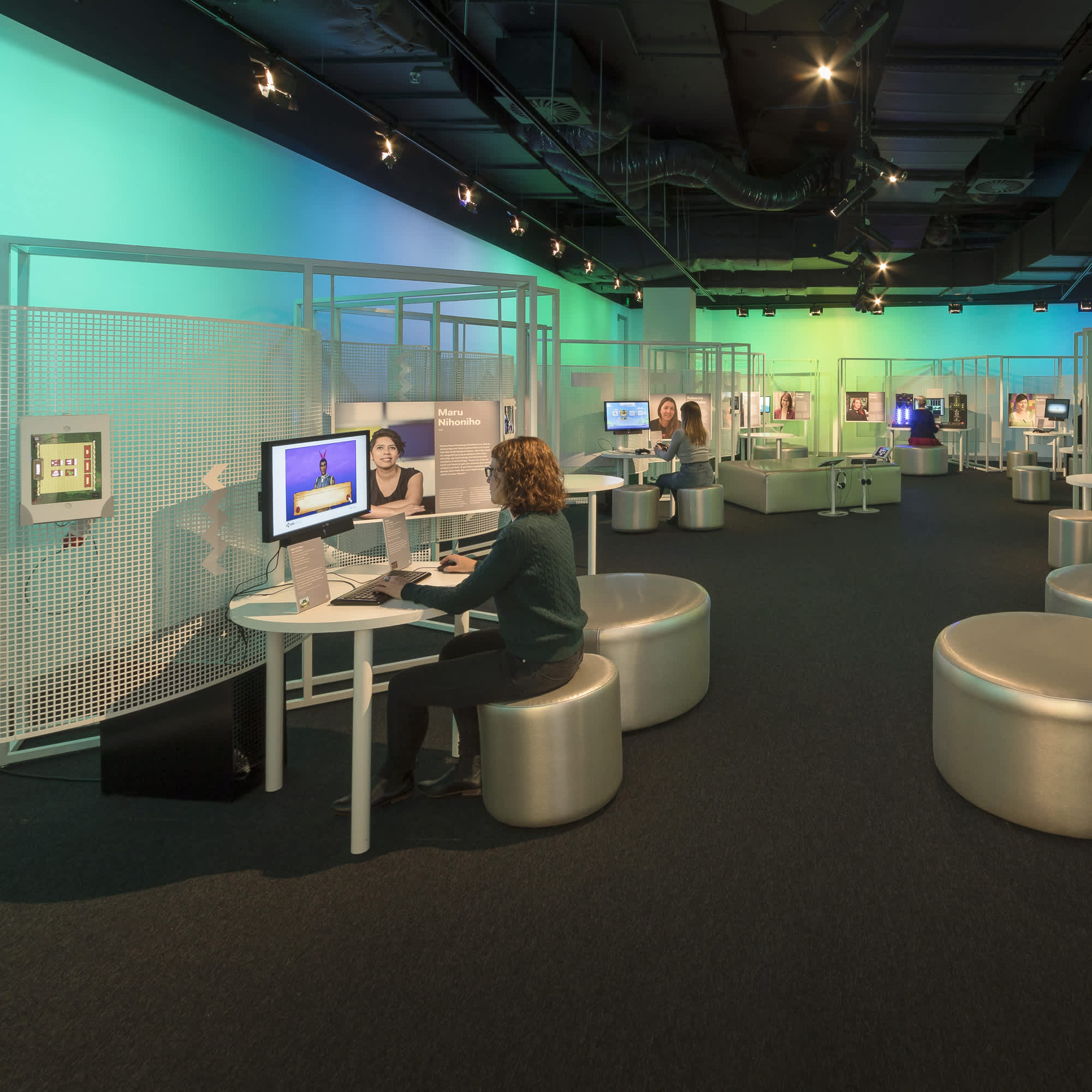
- POPSUGAR Australia
- Gaming
- Play Video Games and Celebrate Women in Gaming at the Code Breakers Exhibition
Play Video Games and Celebrate Women in Gaming at the Code Breakers Exhibition

One of game designer Katharine Neil’s many achievements is her controversial video game Escape from Woomera. It was made in 2003 as a simulation of daily life in the Woomera detention centre, among the Tampa crisis and refugee detention issue at the time. Early in her career, she found herself to be the only woman on the team of about 40 people. “There’s definitely a ‘dude bro’ dynamic. There still is and it’s not anyone’s fault. I think when I started, if I was part of that dynamic I would have progressed in my career much faster.” Ironically, Neil has also found comfort in being in an industry where you can be judged for your creative talent more so than in other industries such as fine art, where it’s harder to judge objectively. “If you make a really good game that fans love, it’s really hard to deny.”
Maru Nihoniho, founder of Metia Interactive, an award-winning game design studio in New Zealand, experienced similar barriers when starting in the industry in 2002. “At conferences where I was one of very few females, it was tougher for me to get in front of and speak with the important figures, most of whom were males. For example watching your male peer go up to somebody and say, ‘Hey let’s grab a beer at the bar,’ it wasn’t something I felt I could easily do. Once I did get in front of people, I had comments like ‘Oh this is unusual, a female-led development company.’ It felt strange to be questioned on my gender more than my motivation. However, I kept moving forward.”
Thankfully, Maru kept strong as she has forged ahead to build Metia Interactive, a studio that develops highly impactful educational and health-based game initiatives. This includes the development of SPARX, a game that helps young people combat depression. Through her games, Maru seeks to raise awareness of her Māori culture and inspire women.
“I create games that feature a strong warrior woman to inspire and motivate. Many of our games are educational resources with a Māori view to inspire and motivate our youth to learn more about their culture. We work with storytellers from each tribe to create an interactive experience around their story, telling it from their point of view, rather than with a blanket Māori point of view. Children get to learn about different tribes in New Zealand. It’s inspiring because they don’t even know that games are made in New Zealand.
“Over the years, government programs that have worked are those that have had Māori input, because we know our culture. Similarly, games for women would ideally be female-led.”
Escape to Woomera is another example where diversity of input into the game was not only fundamental in bringing the story to life and to its appeal, but also part of the controversy which followed its release. Because it was illegal for journalists to take photos of the detention centre, Katharine consulted a researcher and spoke with refugees to reconstruct it for the game. This allowed special insight to see the centre that no one was allowed to see. “Though I wouldn’t say it raised awareness higher than it already was for the issue itself,” she said.
Katharine can’t say for certain that games can create empathy and drive change. “It hasn’t been demonstrated that games create change, but I’d say now that games are dominating cultural expression. All the things expressed in other media, we need to be able to encourage people to express in games.
“I’m not sure they can change people’s minds, but they can at least acknowledge the way certain people feel — that they’re important. There can be an indirect effect of the message on a wider culture increasingly dominated by games. I think that’s the meaningful change that can make a difference. I used to think games had the power because they were interactive, but nowadays if you make a great TikTok, you can raise awareness.”
The game drew criticism, with some critics saying the use of video games as a platform trivialised the refugee detention issue.
“There was much cultural snobbery around the idea of doing anything serious in a game. You put suicide, death or a real world issue into a game, and people thought it was turning it into an amusement. It became an international debate, about whether you can deal with serious stuff in a game, more than the refugee issue. The game raised awareness of the place of games in culture and how we should view games. Things have changed dramatically since then, about what people will tolerate from games and they take games more seriously now.”
Katharine says if the game was made now it wouldn’t get any publicity. “There’s a whole genre of social impact games now. We were at the beginning of it all, that was why it was so shocking. Escape from Woomera now features in a lot of academic writing because it was one of the early examples.”
The game seems to have made history, as have Neil and Nihoniho. Their achievements and games will be showcased among other female game makers at the Code Breakers Exhibition, held at the Yarra Ranges Regional Museum in Melbourne from March 5 to May 15. Women like Katharine and Maru should be celebrated for not only busting through the early challenges of a male dominated video game industry and paving the way for emerging women; but also for including the voices of diverse groups in the storytelling of their games, providing players even more value in terms of education and entertainment.



